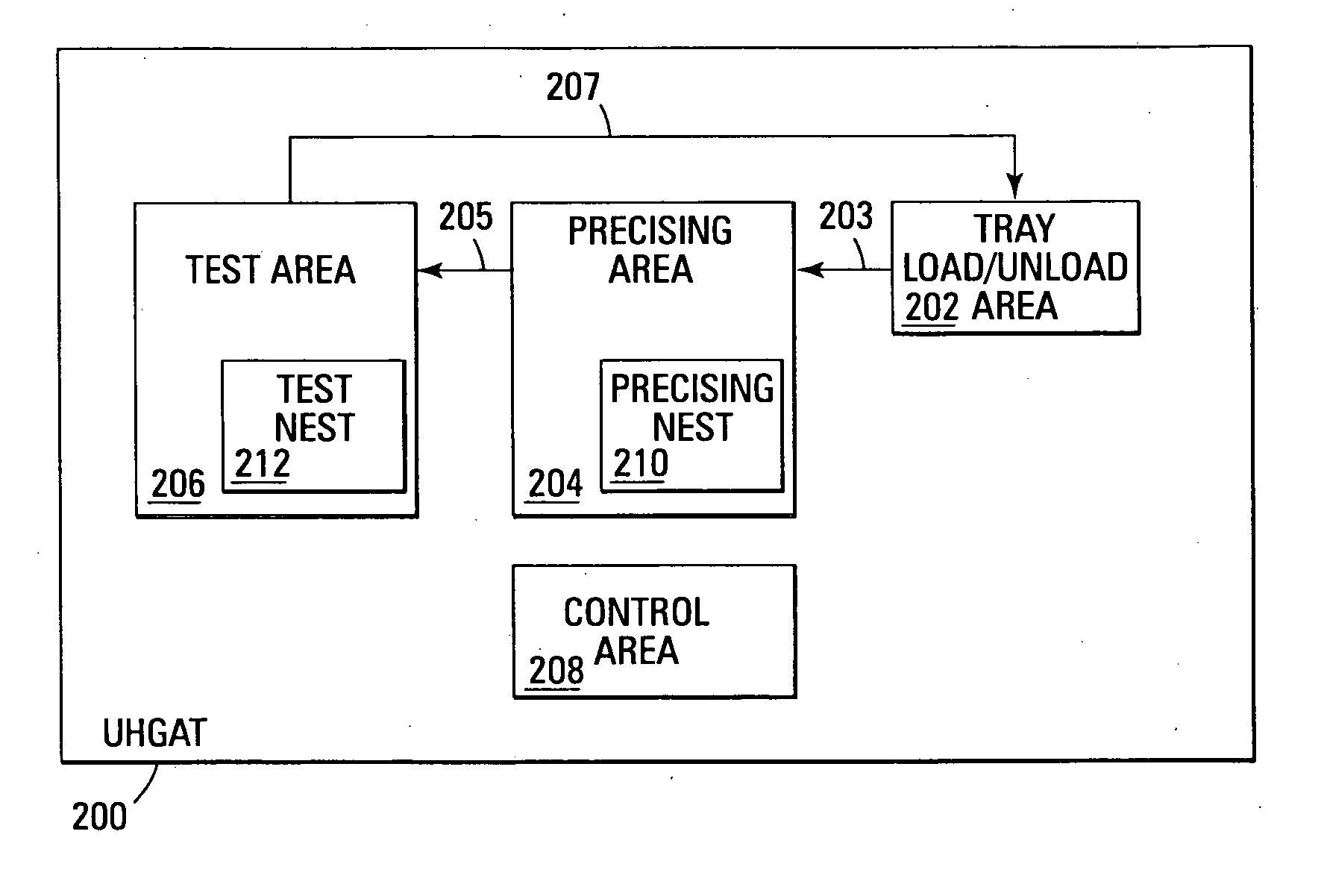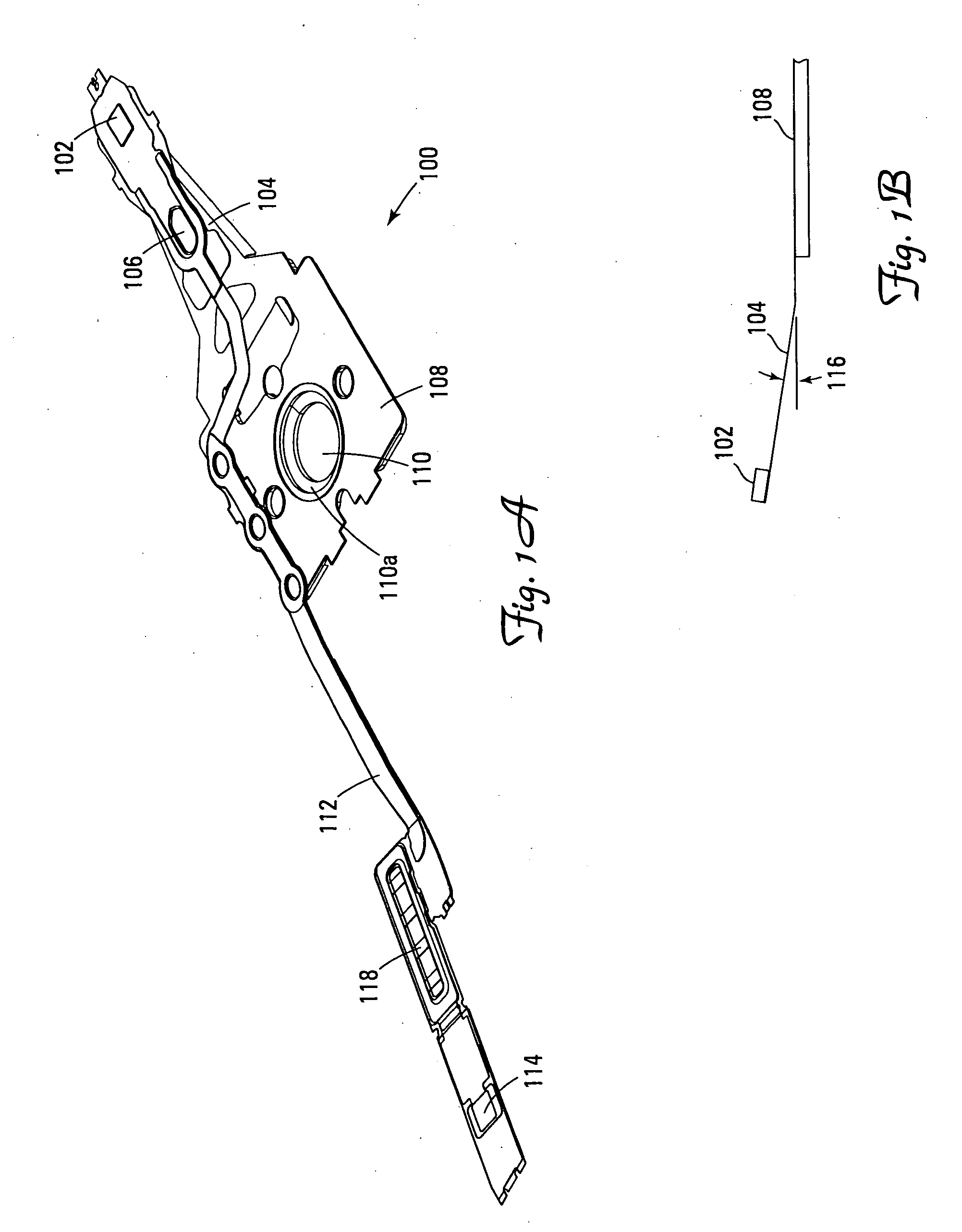Because HGAs are typically small, fragile, and contain sensitive electronic components, they are susceptible to mechanical stress, electro-static
discharge (ESD), environmental
contamination, and other handling-related issues.
After its removal, the HGA becomes extremely sensitive to ESD damage.
Positioning the flex circuit for removal of the shunt tab is challenging because the flex circuit is flexible, and its position can vary over a relatively
wide area.
Additionally, flex circuits may have an inherent bend or twist, further complicating flex circuit positioning.
While this is an accurate method of mounting and provides the needed downward force, it is very labor intensive and adds an extra amount of error contributed by the fixture to the testing process.
While this is less labor intensive than manually screwing the HGA in place, it still requires extensive
manual handling of the part.
It also does not provide any downward force, which leaves the base plate unconstrained and not flat.
This negatively affects the test results.
This method also does not provide sufficient downward force, but forces the back edge of the base plate to align to the clamp.
Because the back edge of the base plate is not a controlled edge, this may cause misalignment during the testing process.
All of the above-described methods are difficult to automate and have costs associated with loading,
purchasing, and maintaining the extra fixtures on which the HGAs are mounted.
The intermediate mounting fixtures also create a larger
mass and require an additional mechanical interface, both of which create another
potential source of error or vibration during the dynamic electric test.
For instance, costs associated with the
loader include the down time for the tester when there are changes in product configuration.
Another cost includes the cost of testing media, which is one of the greatest costs in HGA testing.
HGAs can
crash a disc for several reasons during test including
contamination of the media, non-optimal load orientation of the HGA, and HGAs with extreme or out-of-specification roll or
pitch values.
New generations of HGAs have features on the load beam beyond the head that contact the disc before the head and can damage the disc.
This can result in a limited number of loads before the HGA or media are crashed.
The ramp load mechanism works well in the drive, but it is difficult to use in the testing process.
Ramp loading also can result in damage to the HGA from the sliding action across the ramp if the appropriate materials or
surface finish are not used.
One of the challenges of this mechanism is where to locate the hinge.
The hinge, however, needs to be in real space and cannot inhibit positioning the HGA at various places on the disc.
Miniaturized loaders with small pivot bearings have been used, but it is difficult to achieve the required structural stiffness and maintain all the tight tolerance required with a small structure and still provide room to access the HGA with an electrical
interconnection.
Though the HGA can be loaded at an angle shallower than the
vertical load, it does not sufficiently reduce stresses to the HGA during load.
Once the HGA's head is loaded to the disc, there are still many sources of positional disturbance that can affect the effective
track density during testing.
Internal and external sources, such as spindle motor vibrations or external air turbulence and acoustic vibrations, may create vibrations that excite a disc and create disc
flutter.
The compliance in the HGA load beam allows the head to follow undulations of the disk, but because the base plate of the HGA is held fixed relative to an
external reference there may be a small error.
This error is significant at current and higher track densities.
Systems that test the top surface are at a
disadvantage from a part handling standpoint because testing on the bottom surface is considered more compatible with how the HGA is presented to the HGA tester.
Additionally, placing a disc on the spindle is more difficult in current systems that test the top surface because of the close proximity of the
flutter reduction device to the seated disc.
Current systems that test the bottom surface of the disc also have disadvantages because they typically invert the spindle, which creates a number of structure challenges in order to maintain the required rigidity and access for disc changes and other service needs.
By increasing the
mass that the tester micro-positioner must move while testing, the presence of the intermediate mounting fixture can lead to lower dynamic electrical tester track per inch (TPI) capability.
By limiting the load radii and
skew options, the tester may use more media and take more time to load the HGA, which decreases the number of HGAs tested in a given period of time.
 Login to View More
Login to View More 


